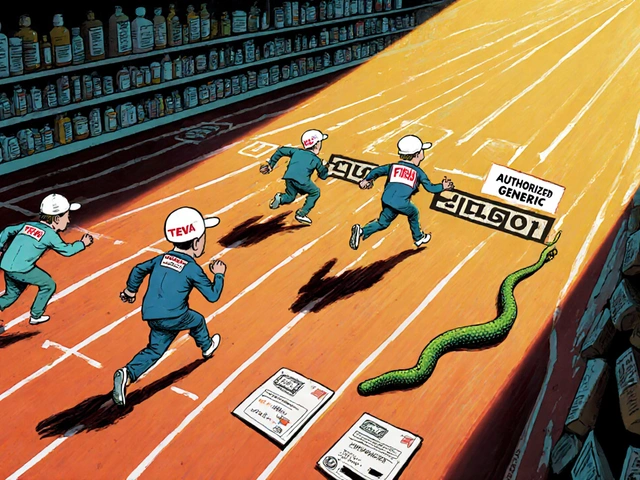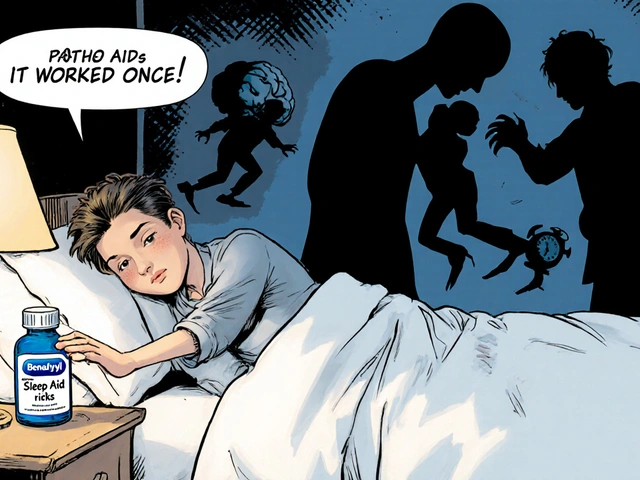Back pain stops you in your tracks. Whether it's a simmering ache by your shoulder blades or a sharp jab right in the lower back as you stand up, it’s a constant thief of comfort. Chronic backache is the most common cause of missed workdays—outpacing even the infamous headache and dreaded cold. If you’ve ever reached behind to knead a sore patch with your knuckles and wished for instant relief, you’re definitely not alone. But here’s the kicker: the right massage moves, done at the right time, can do more for your back than just about any fancy cream or pain pill.
The cool thing is, massage therapy isn’t just a “spa treatment” curiosity. Nearly 65% of people with backache report real, steady relief after a proper massage session, according to a 2023 report from the American Massage Therapy Association. Even pro athletes and office-dwelling mortals swear by it. Why? It’s about more than just loosening up the muscles—it’s a blend of ancient wisdom, modern science, and hands-on common sense. Buckle up, and let’s break down what actually works, what feels amazing, and what you can try at home (without any of the guesswork).
Why Massage Therapy Is a Game-Changer for Backache
Let’s just say it: the back is complicated. You’ve got zig-zagging muscles, tight fascia, nerves running like electric wires, and a spine that takes a beating every time you slouch at your desk or carry groceries. No surprise, then, that back pain is a catch-all phrase for dozens of issues—strained muscles, compressed nerves, sticky connective tissue, and more. What does massage therapy actually do here that regular stretching or pills can’t?
First, massage improves blood flow. That sounds simple, but when tight muscles get better circulation, oxygen and nutrients get delivered faster, and waste products like lactic acid move out. This means less inflammation and tension stacking up. Research from the Journal of Pain found that just one 30-minute session of targeted massage therapy reduced chronic lower back pain scores by almost half for participants, and the benefits lasted a week or more. Not bad for half an hour on the table.
There’s also the wonder of endorphins—the body’s natural feel-good chemicals. Massage triggers a release of these little helpers, and that alone explains why most people get up from a session feeling lighter, floatier, and just… better. It’s not magic; it’s brain chemistry at work. Plus, during a massage, the brain registers safe, pleasant touch and tones down the “danger!” signals it keeps barking when your back hurts. You chill out, your nervous system chills out, and pain perception goes down.
Another bonus? Massage therapy helps undo the “sticky” adhesions in your soft tissues. If you’ve ever poked a sore spot and it felt sharp or crunchy, that’s often fascia—the body’s internal spiderweb—pulling on nerves. Manual work by a skilled therapist can smooth out these sticky bits and increase your range of motion. That’s why people who get regular back massages notice they can twist, bend, and reach with less fear of pulling something.
All this comes with almost zero side effects—no risk of chemical dependency, messed-up sleep, or foggy thinking that strong painkillers can cause. For some people, a weekly massage can keep surgery at bay and help dodge the trap of pain cycles turning into a permanent way of life. It’s not an all-or-nothing fix, but it’s one smart weapon in your back-care arsenal.
Top Massage Therapy Techniques: What Really Eases Back Pain?
So, you’re convinced massage can help. But not all massages are created equal, and the difference between a lazy rubdown and life-changing relief is all about technique. Let’s go through a lineup of massage therapy techniques, and how each one takes on stubborn backaches.
- Deep Tissue Massage: The go-to for chronic pain. Deep tissue targets those stubborn knots and muscle “bands” that never seem to relax no matter how much you stretch. Using slow, deliberate strokes and lots of pressure, a therapist works deep into the muscle layers and connective tissue. It’s intense—sometimes you’ll feel a bit sore the next day—but it releases built-up tension from poor posture and old injuries. Deep tissue can even help people with sciatica, since those angry nerve roots in the lower back often get squeezed by tight glute or hip muscles.
- Trigger Point Therapy: Ever had a spot on your back where pain radiates outward when pressed? That’s a trigger point—a bundle of irritated nerves and muscle fibers that can set off pain in surprising places. Trigger point massage zeroes in on these spots, applying focused pressure for 10-60 seconds at a time. It can make you wince, then feel an almost instant release. Many people dealing with repetitive strain (think: long hours at a computer, lifting heavy stuff) swear by this method.
- Swedish Massage: This classic is all about relaxation, circulation, and gentle-to-firm gliding strokes. It’s less about digging elbows into problem areas, more about overall comfort. Swedish massage is a smart choice if your back is sore from stress, sleep issues, or travel, not just physical strain. Studies from Harvard Health back up the wisdom here: Swedish sessions consistently drop client stress hormone levels and lead to better quality sleep—both key for pain recovery.
- Myofascial Release: Fascia, that stretchy web wrapping your muscles, can get sticky over time. Myofascial release uses sustained gentle pressure—think holding and stretching spots rather than kneading them—to “unstick” these fibers. This widens space for nerves, improves movement, and drops pain. Runners, yoga fans, and older adults with a “stiff all over” feeling especially love this approach.
- Hot Stone Massage: Heated stones might seem like a spa gimmick, but they actually matter for muscle tension. Placing smooth, warm stones along the back relaxes deeper layers of tissue, letting the therapist go deeper without causing extra soreness. If you have pain triggered by cold or tension (hello, winter desk jobs), heat can double the relief.
The trick is matching the technique to your pain. Chronic, deep-rooted pain? Go deep tissue or trigger point. Stressed and anxious? Swedish or hot stone are your friends. Super stiff or tense? Myofascial release. It’s not about picking the fanciest-sounding name—it’s about what suits your body right now.

Self-Massage Tips and Tools: Keeping Backache in Check Between Sessions
Can you really massage away backache at home? Absolutely—if you know where to press, and how long to stick with it. Don’t expect spa-level bliss, but regular self-massage can stretch out those “between appointment” blues and keep pain from spiraling.
Start with the simple tennis ball trick. Place a clean tennis ball (make sure it’s firm, not squishy) between your back and a wall, then lean into sore spots. Slow circles, gentle pressure—suddenly you’re running your own mini massage studio for less than $2. If you crave more, foam rollers step it up. Lying with a foam roller under your lower back, gently rock back and forth to iron out knots and loosen the fascia. Just skip rolling directly over the spine itself—stick to the fleshy parts of the lower back, glutes, and even the back of your thighs, which can tug on the lower back if tight.
- Tip: If you discover a tight spot, pause and hold steady pressure for 30 seconds, breathing deeply. This acts like a hack for short-circuiting nerves so they “reset.”
- Look for trigger points—typically, the base of the neck, midpoint between shoulder blades, just above the waist. These hot spots often refer pain elsewhere, so hitting them can bring relief miles away.
If your hands get tired or your range of motion is limited, there are back massage tools everywhere now: cane-shaped self-massagers, massage guns, or heat pads that you strap around your lower back. Don’t fall for fancy marketing—a simple, manual massager plus some focused attention can go a long way.
Set a timer for just 5–10 minutes once or twice daily, and combine massage with gentle movement. Stretching your hamstrings after rolling out your lower back, doing some cat-cow yoga moves, or just standing up and reaching overhead can amplify relief. And if it feels tender the next day, you probably hit the right spot—just don’t overdo it. Pain isn’t gain, it’s a signal to go easier.
Choosing the Right Massage Therapist and Getting Results
The skill of your therapist matters—big time. Have you ever left a massage feeling worse than you started, or with nothing but a lighter wallet? Credentials aren’t just a piece of paper. When looking for someone to trust with your back, search for a licensed massage therapist (LMT) with advanced training in the specific type of pain you have. For backaches, look for folks certified in deep tissue, myofascial release, or neuromuscular therapy.
Talk plainly with your therapist about your pain story—when did it start, what makes it worse, and what makes it better? Don’t be shy: let them know if you want more or less pressure during the session. A good massage is a conversation between your body and their hands; nobody is reading your mind here. Honest feedback helps you walk away feeling looser, more balanced, and with less pain.
- Red flag: If a so-called therapist ignores your feedback, pushes on bony spots, or claims to “fix” you in one session, move on. Reliable pros work with your comfort, not against it.
- Tip: Hydrate well after a session. Massage shakes loose metabolic waste from your muscles, and water helps flush it out—less soreness tomorrow.
Frequency counts, too. For chronic backache, start with weekly or biweekly sessions if you can swing it, then ease back to monthly maintenance. Combine massage with daily mini-sessions at home, movement, and lifestyle tweaks—better posture, smarter lifting habits, a supportive mattress. Massage is never a one-and-done fix, but the payback is sweet: more energy, better mood, and a back that finally feels like yours again.
Who knew an hour on the table or a humble tennis ball could flip the script on back pain? Massage therapy isn’t just an “extra”—it’s a built-in reset button for your body and mind. Next time pain tries to steal your day, you won’t be hunting for the painkillers; you’ll be reaching for the better fix, hands-on.


